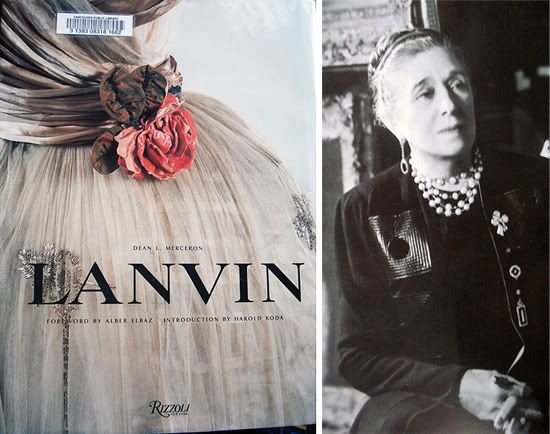
The other day I was perusing various books on Amazon and came across Lanvin by Dean L. Merceron. This is the wonder of the internet, that I can stumble across something and develop an interest I can immediately bring into real life by requesting it through my local library! MAGIC.
Anyhow, I picked it up from the library on Sunday and have since been feasting on a visual cornucopia.
I am following somewhat of a policy of honesty on this blog so here is a note: I have yet to completely read the book, in a manner of speaking. It's divided into several sections like Clientele (which is itself divided into things like Bride and Debutante), Inspiration & Symbolism (Familial, Catholic), and Lanvin Craftsmanship. The text is small and crammed with verbose descriptions of workmanship, history, and direction. Although very detailed and very interesting, I couldn't help but skim.
Because this is the equivalent of a drool-worthy grown-up picture book.
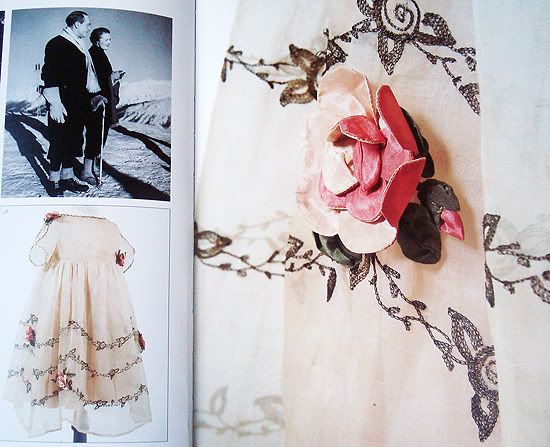
The book concentrates on the life and inspiration of Jeanne Lanvin herself, the mastermind and founder behind Maison Lanvin. It chronicles her journey from millinery in the early 1900s through to children's clothing and then women's couture by the 1920s. I was surprised at how little I knew about an amazing woman dedicated to the finest details of her craft. Considering my undying love for Alber Elbaz and his work, I was blown away by everything mentioned about Lanvin and her life that I didn't know a thing about.

The greatest understanding Merceron was able to convey to me was Lanvin's place in the world she lived in. She was designing at the same time as Chanel and Vionnet; in the 20s women embraced their empowerment through dress. Coco Chanel may be the most well-known story of those times today (think about it - how many Chanel quotes do you find on girls' blogs and Facebook pages?). But Lanvin was in a category all her own.
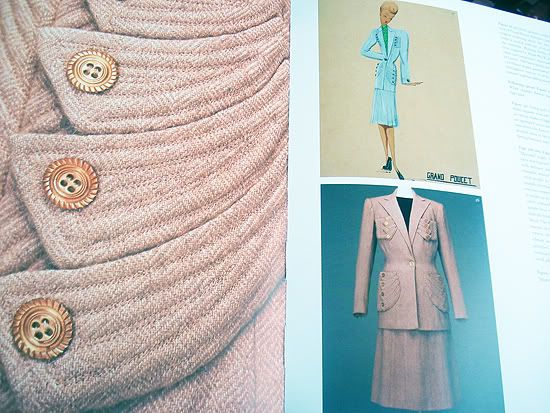
Although Jean Patou and Gabrielle Chanel introduced a new sportswear sensibility to high fashion that came to characterize the century, Lanvin, unlike the designers who preceded her or were her true contemporaries (both Patou and Chanel were over a decade younger than Lanvin), was able to present not only a convincing alternative to the industrial modernism of her younger colleagues with her emphatic but rarely cloying romanticism ... a paradoxical mix of sophistication and charm. It was a potent combination that a woman might desire for herself. Even at her sleekest, the Lanvin woman never conveyed the hard chic of Chanel. The air of prettiness created in the Lanvin ateliers of tailleur and flou reflected a gentler ideal of elegance.

Is it any wonder that I want to be a Lanvin girl? Full of glossy photos, this book kills me with detail shots and dress sketches from the ateliers of Lanvin's empire. And while I also have a certain perpetual longing to be a Chanel girl, anyone can admit that the brand Chanel brings up images of prim tweed suits, the woman with direction and very high heels. Lanvin, on the other hand, designed for French women who wanted empowerment and who lived for the elegance of someone who knows who they are, but brought in an element of feminine beauty like a tiny breeze from foreign places. Lanvin actually also covers interesting thoughts on her foreign influences - she was a woman of travel and loved Asia and the Middle East. Combined with a nostalgic sweetness borrowed heavily from styles of the 1700s, sewn together with painstaking hand-stitched embroidery and beading, every piece photographed is a marvel. The author himself gives wonderful insight into the details shown. It really is too bad that I was so distracted by the gorgeous visuals!
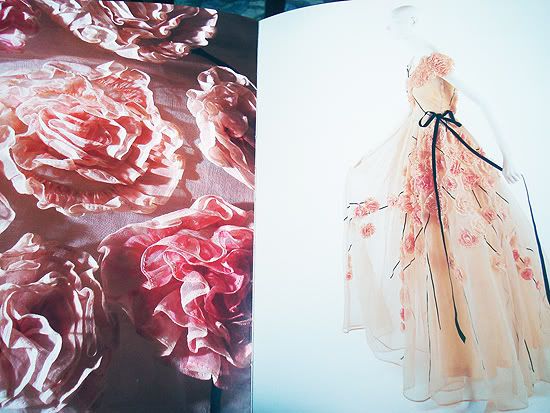
The above dress may be one of my favourites shown in the book, and its clean lines but decorated detail are a perfect example of the Lanvin aesthetic: pretty, frothy, but sleek and modern enough for the new post-20s woman. Um, not to mention that it is RIDICULOUSLY GORGEOUS. Just saying.
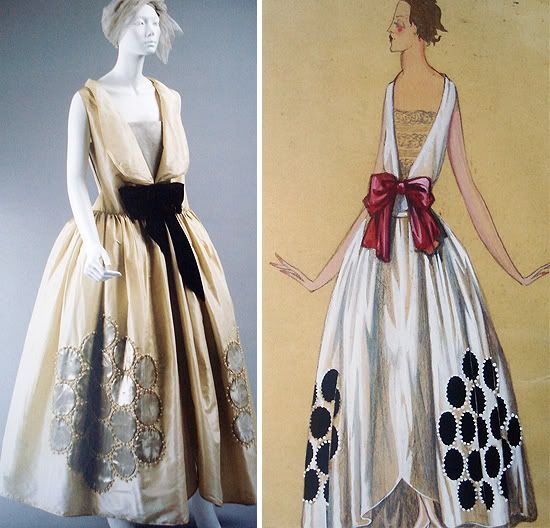
I'm also very much drawn to Lanvin's creations due to the motifs that Merceron discusses - including, of course, the beloved Lanvin bow. He writes some very, very interesting commentary on a wedding dress Lanvin designed that featured pomegranate embroidery as a metaphor - now that is what I adore about fashion and couture as art.
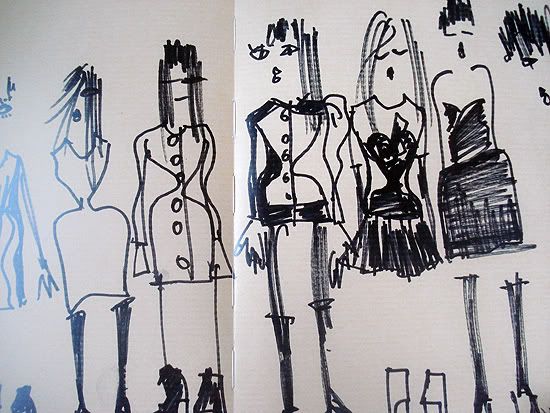
As I said before, I have undying love for Alber Elbaz, so I was very pleased with his foreword and the part written by Merceron about his own contribution to making the Lanvin label what it is now after decades of dormancy. There's a good chunk of the book dedicated to Lanvin under Elbaz, in the form of several full-spread photographs from the runway and from photoshoots with his work. It's also very pretty, though after several hundred pages of vintage attention to detail, detail shots of the overt modern simplicity of his design do disappoint a little bit. The best part of the Elbaz section, hands-down, are his sketches - some might call them abstractions of the female form, I say that his sketches are reminiscent of a child's but that just makes me adore him even more!
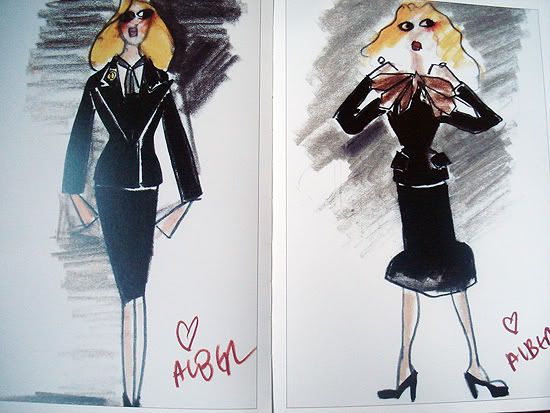
See? ADORABLE.

all images from Lanvin by Dean L. Merceron. Further credits for individual photos can be found in the book itself.
Here are my parting words regarding Lanvin. If you like fashion and even if you "just like art", you need to pick it up and take a read. If you have money, buy it on Amazon. If you don't (like me), go to the library and see if you can find it. It's beautiful and informative and just so lovely and inspiring that I don't have the words. You don't see anything quite like vintage couture in the world today.
much love,
Kai

amazing post!
ReplyDeleteThank you for such an insiteful and fair opinion of the book. It was a joy to work on such a project.
ReplyDelete